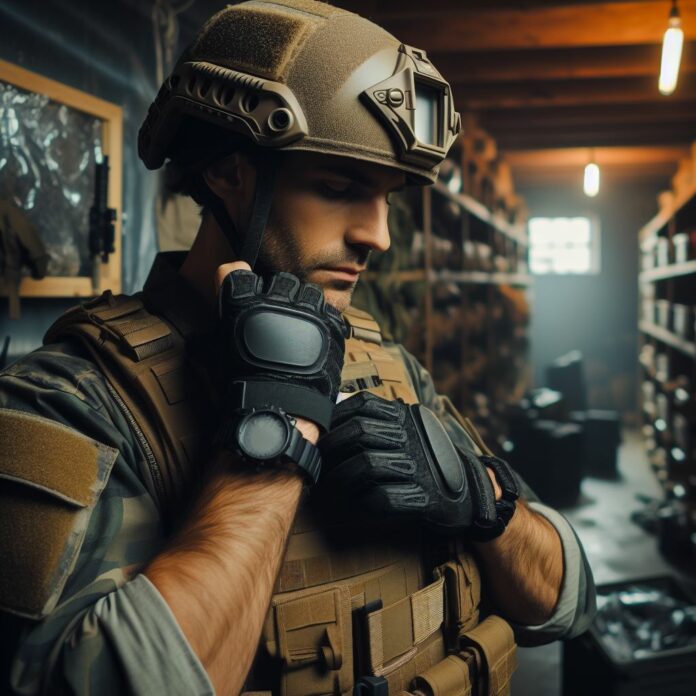A tactical helmet is an essential piece of protective gear used by law enforcement, military personnel, and outdoor enthusiasts. It not only serves as a safeguard for the head but also provides a platform for mounting additional equipment.
However, wearing a tactical helmet that does not fit properly can compromise its effectiveness and comfort. Therefore, understanding how to fit a tactical helmet correctly is crucial.
Proper fitting is important for several reasons. It ensures optimal protection by minimizing the risk of injury from impact or falling debris. A well-fitted helmet also allows for better stability and balance during physical activities. A comfortable fit enables prolonged wear without discomfort or distraction.
The first step in fitting a tactical helmet is measuring your head to determine the right size. This involves measuring the circumference of your head using a flexible tape measure. Once you have the accurate measurement, you can choose the appropriate helmet size.
Adjusting the chin strap is another crucial aspect of helmet fitting. Firstly, position the chin strap comfortably under your chin, ensuring it is centered and not twisted. Next, adjust the tightness of the chin strap so that it is snug but not too tight. This ensures proper helmet placement and prevents excessive movement during use.
Many tactical helmets feature a suspension system that allows for a customizable fit. Understanding the suspension system and adjusting it correctly helps achieve a secure and snug fit. This involves adjusting the suspension straps and pads to match the shape and contours of your head.
When fitting a tactical helmet, it is important to secure additional accessories such as night vision devices or communication systems. Properly mounting and balancing these accessories ensures that they do not interfere with the helmet’s fit or stability.
Performing a fit test is vital to ensure that the helmet fits properly. Check for proper helmet coverage, making sure it protects your forehead, temples, and the back of your head adequately. Verify the helmet’s stability by shaking your head gently to ensure it stays securely in place.
Finally, it is essential to troubleshoot common fitting issues to address any discomfort or movement problems. This includes addressing pressure points or discomfort by adjusting padding or straps, as well as addressing slippage or movement by ensuring a proper fit and securing straps.
By following these guidelines and understanding the importance of a proper fit, you can ensure that your tactical helmet provides optimal protection, comfort, and functionality.
Why is Proper Fitting Important?
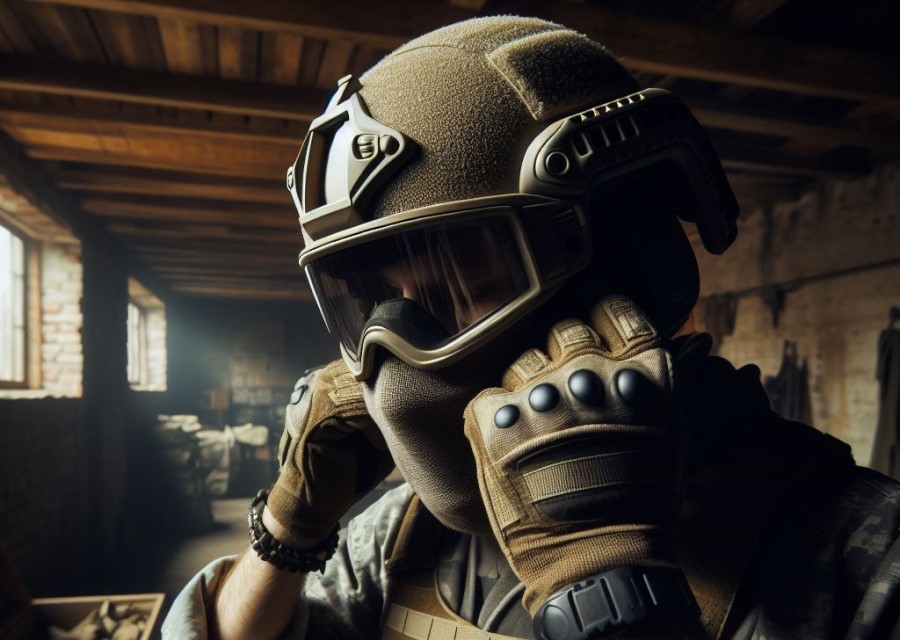
Proper fitting of a tactical helmet is essential for several reasons. Firstly, a properly fitting helmet ensures optimal protection by reducing the risk of injury in the event of impact or accidents. Ill-fitting helmets may not provide adequate coverage or stability, increasing the chances of head injuries.
Secondly, proper fitting enhances comfort and wearability. A well-fitted helmet sits securely on the head without causing discomfort or restricting movement. This allows the user to focus on their tasks without distractions or discomfort.
Lastly, an appropriately fitted helmet promotes efficiency and performance. It allows for better communication, as it doesn’t interfere with peripheral vision or impede hearing. This is particularly important in tactical or high-stakes situations where effective communication is crucial.
Measuring Your Head for the Right Size
When it comes to finding the right size tactical helmet, measuring your head accurately is crucial. By following these steps, you can ensure a proper fit and maximum protection:
- Begin by using a flexible measuring tape to wrap around your head’s circumference, just above your eyebrows.
- Make sure to hold the tape snugly but not too tight, ensuring that it is level and straight around your head.
- Take note of the measurement in either inches or centimeters.
- Consult the manufacturer’s sizing chart to determine the appropriate helmet size based on your measurement.
- Select a helmet size that closely matches your measurement, avoiding ones that are too loose or too tight.
- Prior to purchasing, try on the helmet and ensure that it sits comfortably and securely on your head.
- To achieve a snug fit, adjust any straps or pads inside the helmet.
- Gently move and shake your head to test the stability of the helmet. It should not be loose or wobble.
- Verify that there is sufficient clearance between the helmet and the top of your head for proper protection.
- To double-check the fit, engage in physical activities or movements that you would typically perform while wearing the helmet.
By taking these steps and accurately measuring your head, you can confidently choose a tactical helmet that provides optimal safety and comfort during use.
Adjusting the Chin Strap
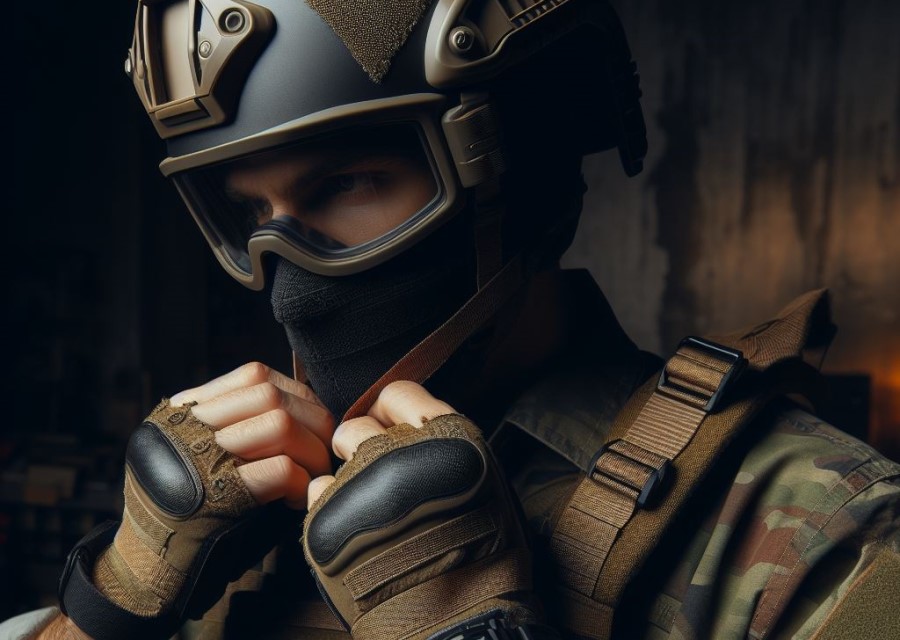
When it comes to fitting a tactical helmet, getting the chin strap just right is crucial. In this section, we’ll explore the ins and outs of adjusting the chin strap for optimal comfort and security.
From positioning the chin strap correctly to finding the perfect level of tightness, we’ve got you covered. So, let’s dive in and make sure your tactical helmet fits like a glove, ready to protect you in any situation.
Positioning the Chin Strap
Positioning the chin strap is an important step in ensuring the proper fit of a tactical helmet. Follow these steps to correctly position the chin strap:
- Start by donning the helmet and adjusting it to your desired position on your head.
- Find the chin strap, typically attached to the sides of the helmet.
- Hold the chin strap with both hands and place it centrally under your chin.
- Ensure the strap is untwisted and lies flat against your skin.
- Adjust the strap’s length by using the adjustable buckles on each side of the helmet.
- Tighten the chin strap for a snug, yet comfortable fit. It should be secure enough to prevent the helmet from shifting, but not excessively tight to cause discomfort or restrict movement.
- Once adjusted, secure the buckle.
- Double-check the position of the chin strap to ensure it is centered and properly aligned.
- Conduct a fit test by moving your head side to side, up and down, and in a circular motion. The helmet should remain in place without excessive movement or slippage.
Properly positioning the chin strap is crucial for the secure and comfortable fit of a tactical helmet, providing essential protection during tactical operations or outdoor activities.
Adjusting the Tightness of the Chin Strap
Adjusting the tightness of the chin strap is an essential step in ensuring a proper fit for a tactical helmet. By following these steps, you can ensure that the chin strap is securely and comfortably fastened:
Adjusting the tightness of the chin strap:
- Position the chin strap under your chin, making sure it rests comfortably.
- Using the strap adjuster, tighten the chin strap until it feels snug against your chin.
- Ensure that the strap is not too tight, as it should allow for easy movement and breathing.
- Do not overtighten the chin strap, as it can cause discomfort and restrict blood flow.
- Perform a fit test by moving your head up and down, side to side, and shaking it gently to ensure that the helmet and chin strap stay securely in place.
- If the helmet slips or moves during the fit test, re-adjust the tightness of the chin strap until it provides a secure fit.
By following these steps, you can ensure that the chin strap is adjusted correctly and provides the necessary security and comfort while wearing a tactical helmet.
Adjusting the Helmet Suspension System
Adjusting the helmet suspension system is key to ensuring a secure and comfortable fit. In this section, we’ll delve into understanding the suspension system and how to adjust it properly.
Get ready to discover the secrets to an optimal and snug fit that will keep you protected during tactical operations or high-impact activities. Don’t miss out on these valuable tips that will ensure your helmet stays in place when it matters most!
Understanding the Suspension System
The suspension system is an integral part of a tactical helmet that ensures a secure fit and optimal protection. Understanding the suspension system is crucial for proper helmet usage.
To begin, the suspension system consists of straps and pads that help distribute the weight of the helmet evenly and absorb any impact. It plays a vital role in providing stability and comfort to the wearer.
When adjusting the suspension system, it is important to understand the different components and their functions. These components include adjustable straps, chin cup, and crown pad.
The adjustable straps allow for customization of the helmet fit, providing a snug and secure feel. The chin cup helps to keep the helmet in place during movements. The crown pad offers additional comfort and stability by cushioning the top of the head.
To ensure a secure fit, it is essential to adjust the suspension system properly. Start by tightening the straps to achieve a snug fit without causing discomfort. Next, adjust the chin cup so that it sits securely under the chin. Finally, ensure the crown pad is positioned comfortably on the top of the head.
Understanding the suspension system is crucial for maximizing the effectiveness of a tactical helmet. By properly adjusting the suspension system, users can ensure a secure fit that enhances safety and comfort during tactical operations.
Adjusting the Suspension System for a Secure Fit
Adjusting the suspension system for a secure fit is crucial to ensure that a tactical helmet provides maximum protection and comfort. Follow these steps to properly adjust the suspension system:
- Start by loosening all the adjustment straps on the suspension system.
- Place the helmet on your head and position it so that it sits level and snugly.
- Adjust the rear nape strap, if available, to achieve a secure fit around the back of your head.
- Tighten the side straps evenly until the helmet feels secure without being too tight.
- Adjust the front brow pad, if present, to sit comfortably against your forehead.
Remember, adjusting the suspension system for a secure fit should hold the helmet in place without any excess movement. It should provide a secure fit that doesn’t shift or wobble during physical activities. Adjusting the suspension system for a secure fit properly ensures the helmet stays in the correct position, reducing the risk of injury and maintaining optimal protection.
Fact: A properly fitting suspension system can significantly reduce the risk of head injuries by up to 50%, according to studies conducted by the National Highway Traffic Safety Administration.
Securing Additional Accessories
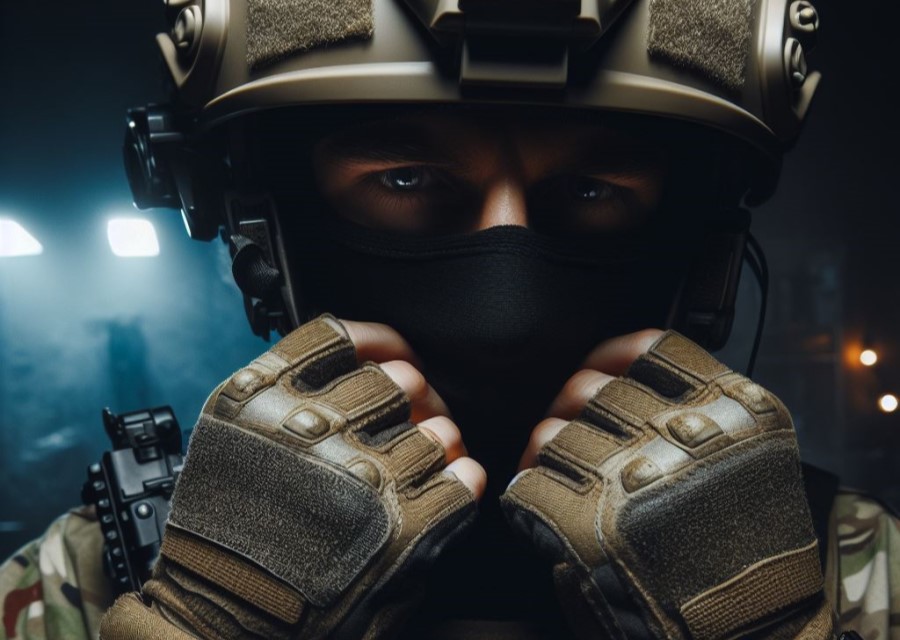
Securing additional accessories is a crucial aspect when it comes to fitting a tactical helmet. In this section, we’ll explore the various techniques and strategies for mounting tactical accessories, ensuring proper balance, and maintaining stability.
By understanding these essential elements, you’ll be able to optimize your helmet setup to enhance functionality and maximize your tactical advantage on the field. So, let’s dive into the world of securing additional accessories and discover the secrets to a perfectly customized tactical helmet setup.
Mounting Tactical Accessories
When it comes to mounting tactical accessories on your helmet, there are a few important steps to follow.
Identify the accessory placement: Determine the best spots on your helmet for mounting accessories based on your specific needs and the type of tactical gear you will be using.
Prepare the helmet: Make sure the surface of your helmet is clean and free from any debris that could interfere with the attachment of the accessories.
Attach the accessories: Using the designated mounting points on your helmet, securely fasten the tactical accessories. Ensure that they are properly aligned and tightened to prevent any movement or loss during use.
Check for stability: Once the accessories are attached, perform a thorough inspection to ensure that they are securely in place and will not hinder your movements or compromise the integrity of the helmet.
By following these steps, you can effectively mount tactical accessories on your helmet and enhance its functionality for your specific mission or activity.
Ensuring Proper Balance and Stability
Ensuring proper balance and stability is crucial when fitting a tactical helmet. Follow these steps to achieve the best fit:
- Position the helmet securely on your head, ensuring it sits level and centered.
- Adjust the helmet suspension system to achieve a snug and comfortable fit. The suspension system should be firm but not overly tight.
- Check the balance of the helmet by moving your head gently from side to side and up and down. The helmet should stay in place and not shift or tip.
- Ensure the chin strap is adjusted properly to secure the helmet in place. It should be snug under your chin, but not too tight to cause discomfort or restrict movement.
- If additional accessories, such as night vision goggles or communication devices, are attached to the helmet, make sure they are properly mounted and do not disrupt the helmet’s balance.
By following these steps, you can ensure proper balance and stability of your tactical helmet, allowing you to perform your duties effectively and safely.
Performing a Fit Test
Performing a fit test is essential when it comes to fitting a tactical helmet. In this section, we’ll explore the key elements of a proper helmet fit, including checking for proper coverage and ensuring helmet stability.
We’ll dive into the details of how to assess these crucial aspects to ensure maximum safety and comfort while wearing a tactical helmet. So, let’s gear up and get started!
Checking for Proper Helmet Coverage
To ensure proper helmet coverage, it is crucial to make sure that the helmet adequately protects the critical areas of your head. Here are some steps to follow:
- Start by positioning the helmet on your head, ensuring that it sits level and covers the top of your forehead.
- Check that the helmet fully covers the sides of your head and extends down to the level of your ears.
- Make sure the back of the helmet reaches the base of your skull to provide protection to the back of your head.
- Ensure that the helmet fits snugly without causing any discomfort or pressure points.
- Verify that the chin strap is securely fastened and properly adjusted to keep the helmet in place.
Pro-tip: To test the coverage, gently push the helmet from different directions. If it moves excessively or shifts, readjust the fit until it remains stable. Having proper helmet coverage is essential for effectively protecting your head during tactical activities.
Verifying Helmet Stability
To ensure helmet stability and verify its stability, follow these steps:
- Make sure the helmet is properly fitted to your head by adjusting the chin strap and suspension system as necessary.
- Conduct a fit test by checking for adequate helmet coverage. The helmet should completely cover your head without any gaps.
- Next, assess helmet stability by gently shaking your head from side to side and up and down. The helmet should remain securely in place without any wobbling or movement.
If any issues regarding helmet stability are identified, consider implementing the following suggestions:
- Tighten the chin strap to ensure a snug fit.
- Adjust the suspension system to enhance stability.
- Consider adding extra padding or cushions for a more secure and comfortable fit.
- If helmet stability issues persist, consult a professional or contact the manufacturer for further assistance.
Troubleshooting Common Fitting Issues
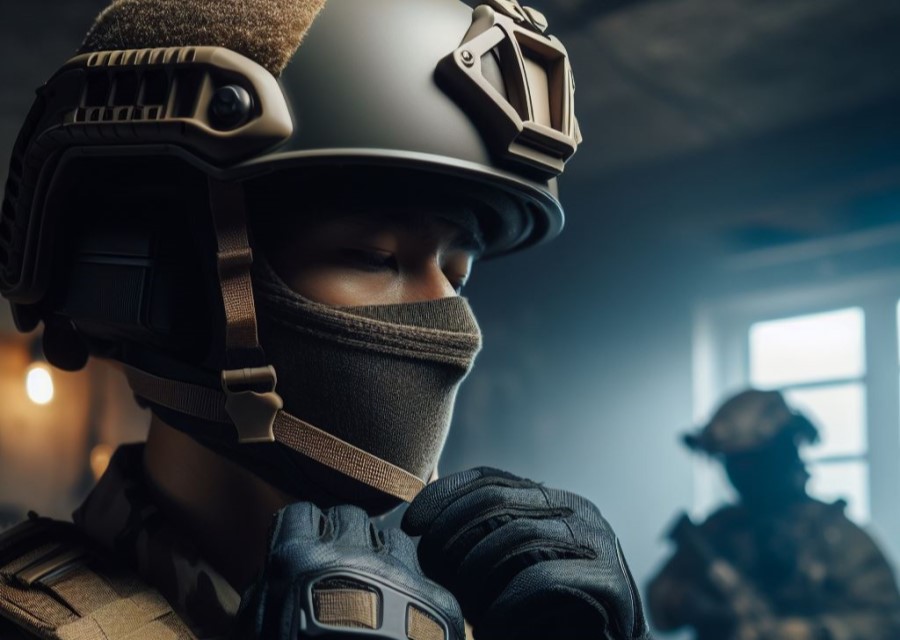
Having trouble getting your tactical helmet to fit just right? Look no further! In this section, we’ll dive into troubleshooting common fitting issues that many face with their tactical helmets.
From uncomfortable pressure points to annoying slippage and movement, we’ll explore various factors that can hinder the perfect fit. So, whether you’re in the military or simply enjoy outdoor activities, read on to discover practical solutions for tackling these helmet fitting challenges.
Pressure Points and Discomfort
When it comes to fitting a tactical helmet, the key is to address pressure points and discomfort in order to achieve optimal comfort and performance. Here are some helpful tips to alleviate these issues:
- Padding: One important factor to consider is the amount of padding in the helmet. Make sure there is sufficient padding in areas that commonly experience pressure points, such as the forehead and sides. You may need to add extra padding or adjust the existing padding to distribute the pressure evenly for a more comfortable fit.
- Chin Strap Position: Another crucial aspect is the correct positioning of the chin strap. It should sit snugly under the chin without causing any discomfort or digging into the skin.
- Chin Strap Tightness: The tightness of the chin strap plays a vital role in finding the right balance between a secure fit and discomfort. Adjust the tightness accordingly to ensure the helmet stays in place without causing excessive discomfort.
- Suspension System Alignment: Proper alignment of the suspension system is essential to avoid pressure points. Take the time to adjust the straps and suspension pads to achieve a balanced and comfortable fit.
- Helmet Size: Always double-check the size of the helmet to ensure it is the correct fit for your head. Wearing a helmet that is too small or too large can lead to pressure points and discomfort.
Remember, ensuring the proper fit of a tactical helmet is crucial for both safety and performance. Taking the necessary steps to address pressure points and discomfort will result in a comfortable and secure fit.
Slippage or Movement
- Ensure proper adjustment: To prevent slippage or movement of a tactical helmet, it is crucial to accurately adjust the chin strap and suspension system.
- Position the chin strap correctly: Position the chin strap so that it sits comfortably beneath your chin and snugly against your jawline.
- Adjust the tightness of the chin strap: The chin strap should be tightened enough to hold the helmet securely in place without causing discomfort or restricting circulation.
- Understand the suspension system: Familiarize yourself with the suspension system of the helmet, as it plays a vital role in providing a secure fit and minimizing movement.
- Adjust the suspension system for a secure fit: Utilize the adjustable mechanisms of the suspension system to customize the fit according to the shape and size of your head.
- Check for proper helmet coverage: Ensure that the helmet covers your entire head adequately, leaving no exposed areas vulnerable to injury.
- Verify helmet stability: Perform a fit test by moving your head in different directions to assess the stability of the helmet. It should remain securely in place without any significant movement.
- Troubleshoot any fitting issues: If you experience slippage or movement despite proper adjustment, identify and address any pressure points or discomfort. You can consider additional padding or adjusting the fit further.
Frequently Asked Questions on How to Fit a Tactical Helmet
How do I properly fit a tactical helmet?
Proper fitting of a tactical helmet involves several steps:
- Start by choosing the correct helmet size based on the manufacturer’s guidance.
- Adjust the suspension system and pad adjustments to ensure a secure and comfortable fit.
- Check for any loose screws or moving parts and tighten them as needed.
- Ensure the chin strap is adjusted snugly and securely.
- Pay attention to detail and make necessary adjustments to achieve a proper fit.
How often should I replace the components of my tactical helmet?
The replacement of components in a tactical helmet depends on the level of wear and tear and the type of user:
- For regular users, it is recommended to check for damage, ensure all parts are working properly, and clean the helmet regularly with soap and water. Additionally, check for loose screws or moving parts and replace exterior Velcro and repaint the shell after 4 years. Other components should be replaced as needed.
- Military users, who use the helmet more frequently, should follow a more stringent replacement schedule. They should replace fitband comfort pads every 100 days or once a year, replace fitband, chinstrap, hardware, and EPP after 2 years, and replace other components as needed.
What accessories can I add to my tactical helmet?
There are various accessories that can be added to a tactical helmet:
- Strobe lights for visibility in low-light situations.
- Night vision devices for improved vision in dark environments.
- Morale patches for customization and team identification.
- Helmet covers for camouflage or additional protection.
- Helmet bridges for attachment points for additional gear.
- Counter weight pouches for balancing the weight of the helmet loadout.
- Communication headsets for easy communication with team members.
- Additional rail systems for mounting accessories such as cameras or lights.
- And many more, depending on your specific needs.
What is the importance of properly maintaining a tactical helmet?
Proper maintenance of a tactical helmet is crucial for its longevity and performance:
- Regular maintenance includes checking for damage, ensuring all parts are working properly, and cleaning the helmet regularly with soap and water.
- Maintaining a helmet in good working condition ensures optimal protection against falling debris, impacts, and bullets.
- By following maintenance guidelines, you can identify worn-down components and replace them promptly to maintain the helmet’s quality and functionality.
How do I care for the external parts of my tactical helmet?
Proper care of the external parts of a tactical helmet involves the following steps:
- Clean the outside of the helmet and accessories regularly with mild soap and water.
- Pay attention to any wear and tear on the shell, straps, or Velcro panels and replace them as needed.
- Repaint the shell after 4 years to maintain its appearance and protection.
- Ensure the NVG shroud and other external attachments are securely fastened and in good working condition.
What should I consider when choosing a tactical helmet?
When choosing a tactical helmet, consider the following factors:
- Protection levels: Ensure the helmet provides the necessary protection for your specific application, such as ballistic protection for high-threat scenarios.
- Comfort: Look for a helmet that offers a comfortable fit and allows for adjustments to achieve a secure fit.
- Quality: Choose a helmet from a reputable manufacturer that meets industry standards and has positive reviews from users.
- Weight: Consider the weight of the helmet and how it may affect your endurance, especially when adding accessories.
- Helmet type: Determine whether an ATE (Above the Ear) or BTE (Below the Ear) helmet is more suitable for your needs.
- Attention to detail: Look for additional features such as attachment points, NVG mounts, and compatibility with accessories.

